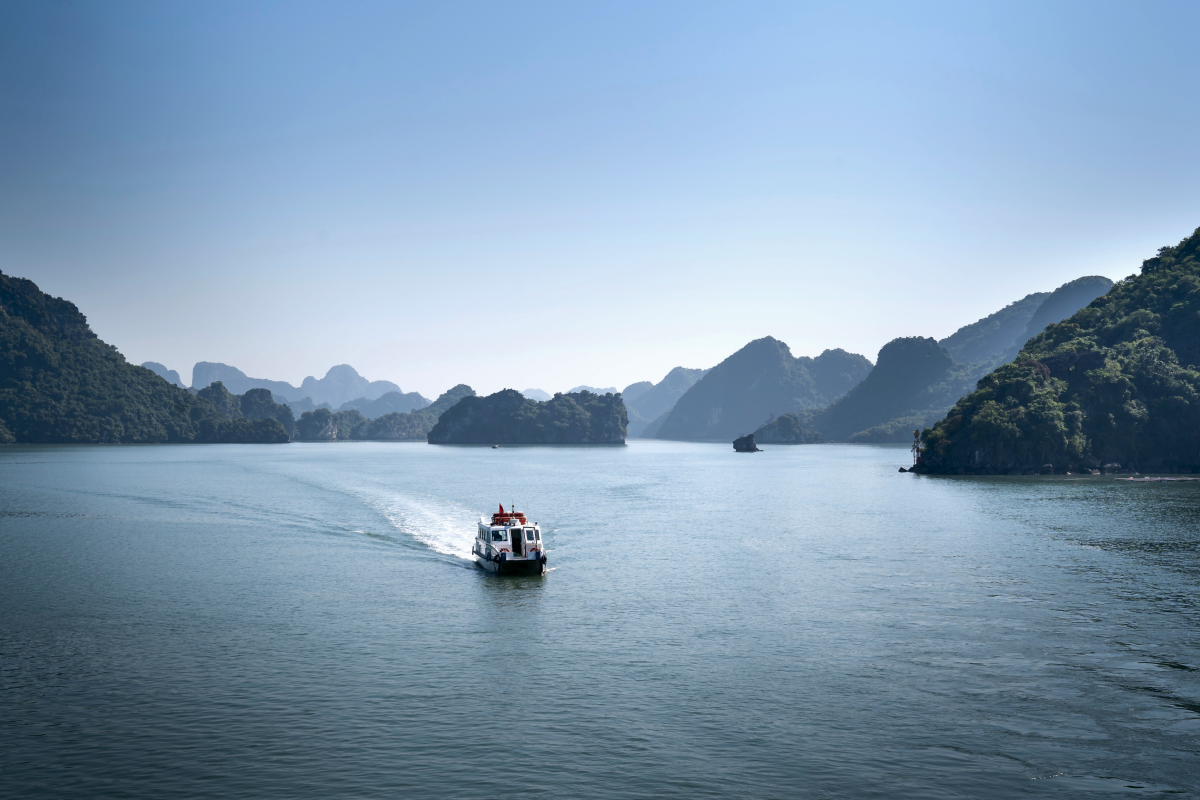The $157 Billion Travel Sector Nobody Is Talking About

Skift Take
This sponsored content was created in collaboration with a Skift partner.
Lodging, airlines, and experiences tend to dominate the conversation when most people talk about the travel industry. But there’s also a $157 billion sector that receives much less attention — ground and sea transportation. Still a largely fragmented, offline marketplace, ground and sea transportation consists of the buses, ferries, trains, and private cars that travelers take in-destination.
Ground and sea transportation is often a critical piece of the customer journey, especially as travelers increasingly seek authentic, local experiences off the beaten path. Although the segment is sometimes referred to as intercity transportation, it can also connect distributed islands or traverse natural expanses.
Yet, as important as ground and sea transportation is, for modern travelers accustomed to digital customer experiences, the booking process can be difficult to navigate. Due to a lack of digitization, travelers typically have to find local offline vendors, deal in local currencies, and contend with language barriers, all without the benefit of live schedule updates or guarantees that they’ll have a confirmed ticket upon arrival.
Skift spoke with Noam Toister, co-founder and chief executive officer of Travelier, about the state of the ground and sea transportation sector today, the market opportunity it represents and accompanying challenges in the space, and projections for how the sector will develop in the future.
Making Fundamental In-Destination Travel Experiences Possible
Modern travelers are able to build connected itineraries — including flights, hotels, activities, and experiences — using a single booking tool. But once they determine how to get to a destination, where to stay, and what to do while there, they still need to figure out how to get around.
Travelers need convenient ways to get from place to place within a region, especially in light of sustainable and slow travel trends inspiring longer, more adventurous stays in less crowded areas. Whether it’s a backpacker riding a bus up the coast or a family of four booking a private driver or a luxury train ride, “everyone needs to use these services at some point if they want to visit the most amazing destinations,” Toister said.
“Transportation is the glue that holds the connected trip together,” he added. “Travelier’s data shows that most travelers book between five to six different transportation services on a single journey visiting between three to four different places.”
While some confident travelers might have no problem taking a two-hour taxi to a bus terminal and haggling over the price of a ticket, not everyone is interested in investing that much effort.
The inconsistency from country to country and region to region makes sales and fulfillment more difficult for third-party resellers like OTAs. For example, in parts of Europe, ground and sea transportation is more integral to the travel infrastructure, and therefore may be easier to consolidate and offer as part of a vacation package. Developing countries don’t have the same type of regulations or connectivity. Even more advanced and modern markets like Japan, Italy, or Spain are simply more spread out, with fragmented ground and sea vendor marketplaces.
Once transportation interactions become more accessible and convenient, both travelers and the destinations themselves benefit.
Take, for example, Vietnam’s rapid rise as a popular tourism destination. It has outpaced nearby countries like Thailand in both baseline growth — growing from 7.6 million international arrivals in 2013 to 12.9 million in 2017 — and pandemic recovery efforts. The World Travel and Tourism Council predicted that travel and tourism would make up 10 percent of Vietnam’s GDP and 8 percent of employment by 2028.
By all accounts, transportation improvements contributed significantly to that growth. “Once Ha Long Bay and Sa Pa had convenient trains and luxury shuttles from Hanoi, tourism expanded into those regions quickly,” Toister said.
Manual Processes and Offline Systems Hold the Segment Back
Although land and sea transportation represents as much as 8 percent of the global travel market, the segment still mostly operates offline. Travelers are more likely to have to visit a bus depot ticket booth or have a hotel concierge call for a car than visit a responsive website or open a mobile app.
“Many operators in this market are still working either manually or on very old-school systems that don’t connect with anything,” Toister said. “Until you bring that supply online, it’s really hard to sell these services digitally.”
This lag may be due to the lower average ticket price of transportation bookings — indeed, the hotels, flights, and experiences or activities that make up the ecosystem of connected travel bookings typically come with higher price tags. However, the incredible technology tucked away in every traveler’s pocket supports the digitization of the transportation supply chain.
“Now is the time for the last vertical of the market to go online and be as seamless as booking flights, hotels, etc.,” Toister said. He projects it will take up to five years for the transportation segment to reach the level of convenience upheld in other travel verticals, but the evolution is already underway.
Taking Transportation Digital Will Require Time, Effort, and Dedication — and Will Deliver Huge Benefits
According to Toister, there are a few key steps that will help bring the transportation vertical online and into the modern travel ecosystem. First, education is required to get transportation providers up to speed on understanding the benefits of going digital and outlining how to best work with online travel agencies (OTAs).
Next, technology will help bridge the gap between providers and customers and among the fragmented operators in the space. That’s why Travelier offers a platform that allows transportation companies to get online and connect immediately and standardize booking for these many disparate transportation systems.
Awareness will also be important in order to solidify the industry’s evolution. Travelers who are accustomed to shopping for ferry tickets at kiosks, for example, will need to be encouraged to shift their behavior once they learn they can book transportation online. “We have to educate the consumer so they know there is a place that they can go online to compare services, prices, and timetables, and book whatever is convenient for them,” Toister noted.
Toister feels confident that more OTAs will eventually catch on to ground and sea transportation as a complementary add-on to the other types of travel bookings they offer. So far, progress has been slow and steady, and fragmentation remains an obstacle to success. Travelier already has partnerships with some of the major players, but it accepts that it will take time to complete the transition.
“We have teams in 27 regions now, in 120 countries, connecting with individual operators and business owners in the local market,” said Toister. “We’ve done many years of legwork, and there’s more to do. We’re still not even halfway there.”
Though it will take some time, a digitized ground and sea transportation sector stands to benefit stakeholders across the travel landscape. Travel providers will be able to connect more parts of the journey and open entirely new revenue streams while offering their customers even more points of connection over the course of a journey. Destinations will benefit not only from increased tourism but also from a more distributed visitor load that moves traffic away from overcrowded cities and into more remote, lesser-known areas.
Ultimately, it will be a win for travelers, who will be able to take advantage of increased convenience in the types of digital experiences that they’ve come to expect, not to mention increased accessibility to parts of the world they might never have visited before.
This content was created collaboratively by Travelier and Skift’s branded content studio, SkiftX.





